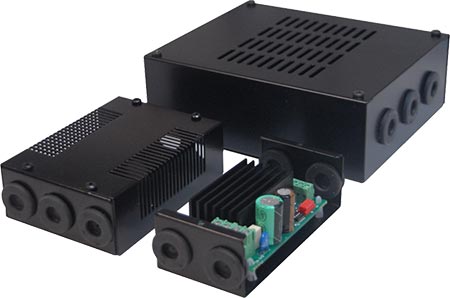When selecting the material for your Sheet Metal enclosures, several factors should be taken into consideration to ensure that the chosen material meets the requirements of your application. Here are some key factors to consider when choosing the right material for your sheet metal enclosures:
- Environmental Conditions: Evaluate the environmental conditions in which the enclosures will be deployed. Consider factors such as temperature extremes, humidity, exposure to moisture, corrosive substances, and UV radiation. Choose a material that offers the necessary resistance to environmental hazards to ensure long-term durability and performance.
- Corrosion Resistance: Assess the likelihood of exposure to corrosive substances such as water, chemicals, salt spray, or industrial pollutants. Select a material with high corrosion resistance, such as stainless steel or aluminum, to prevent rust, degradation, and premature failure of the enclosure in corrosive environments.
- Strength and Durability: Consider the mechanical strength and durability requirements of the enclosure based on its intended use and the level of protection needed for the enclosed equipment. Steel enclosures offer high strength and durability, making them suitable for rugged applications and harsh environments where robust protection is essential.
- Weight Considerations: Evaluate the weight requirements of the enclosure, particularly in applications where weight reduction is critical, such as aerospace, automotive, or portable electronics. Aluminum enclosures offer a lightweight yet sturdy alternative to steel enclosures, providing strength and durability without adding excessive weight.
- Thermal Conductivity: Determine the thermal management requirements of the enclosure, including heat dissipation and thermal conductivity. Aluminum enclosures offer excellent thermal conductivity, allowing for efficient heat dissipation and temperature regulation within the enclosure. This is particularly important in applications where heat-generating components are housed.
- Electromagnetic Compatibility (EMC): Consider the electromagnetic compatibility requirements of the enclosure, especially in applications where sensitive electronics are housed. Choose a material that provides effective shielding against electromagnetic interference (EMI) and radio frequency interference (RFI) to prevent signal degradation and ensure the reliability of electronic equipment.
- Cost Considerations: Evaluate the cost implications of different materials, including initial purchase costs, fabrication costs, and long-term maintenance costs. While stainless steel enclosures may have a higher upfront cost compared to steel or aluminum, they offer superior corrosion resistance and longevity, potentially reducing maintenance and replacement costs over time.
- Aesthetic Requirements: Consider the aesthetic requirements of the enclosure, including surface finish, color, and appearance. Stainless steel enclosures offer a sleek and modern aesthetic, making them suitable for applications where appearance is important. Aluminum enclosures can be anodized or powder-coated to achieve custom colors and finishes, enhancing their visual appeal.
- Regulatory Compliance: Ensure that the chosen material complies with relevant industry standards, regulations, and certifications applicable to your application. Consider factors such as electrical safety, environmental protection (e.g., IP ratings), and hazardous location requirements to ensure compliance with regulatory requirements.
By carefully considering these factors, you can choose the right material for your Sheet Metal enclosures, ensuring that they meet the performance, durability, and regulatory requirements of your specific application. Whether you prioritize corrosion resistance, thermal conductivity, weight reduction, or aesthetic considerations, selecting the appropriate material is essential for the success of your enclosure design.



